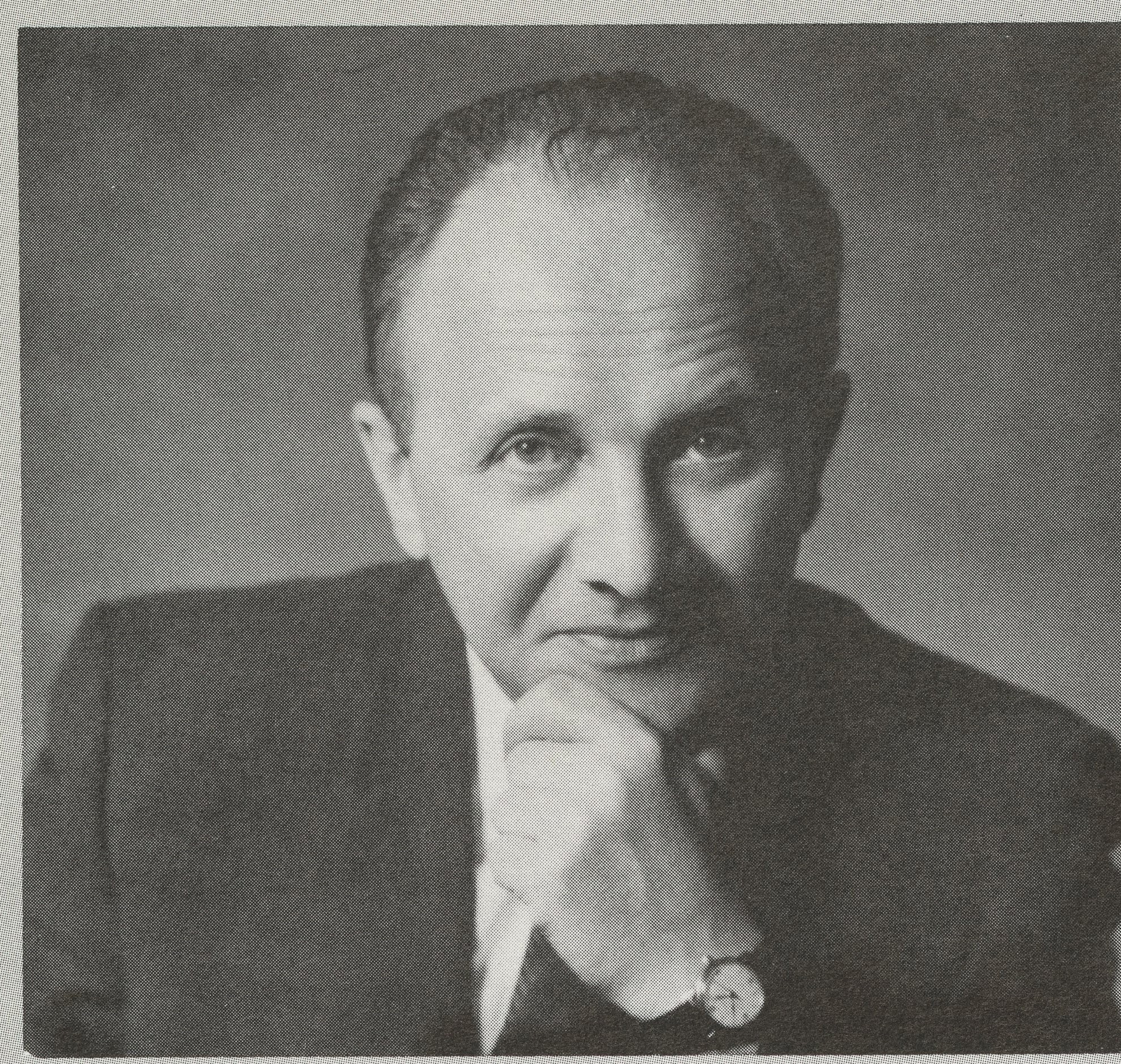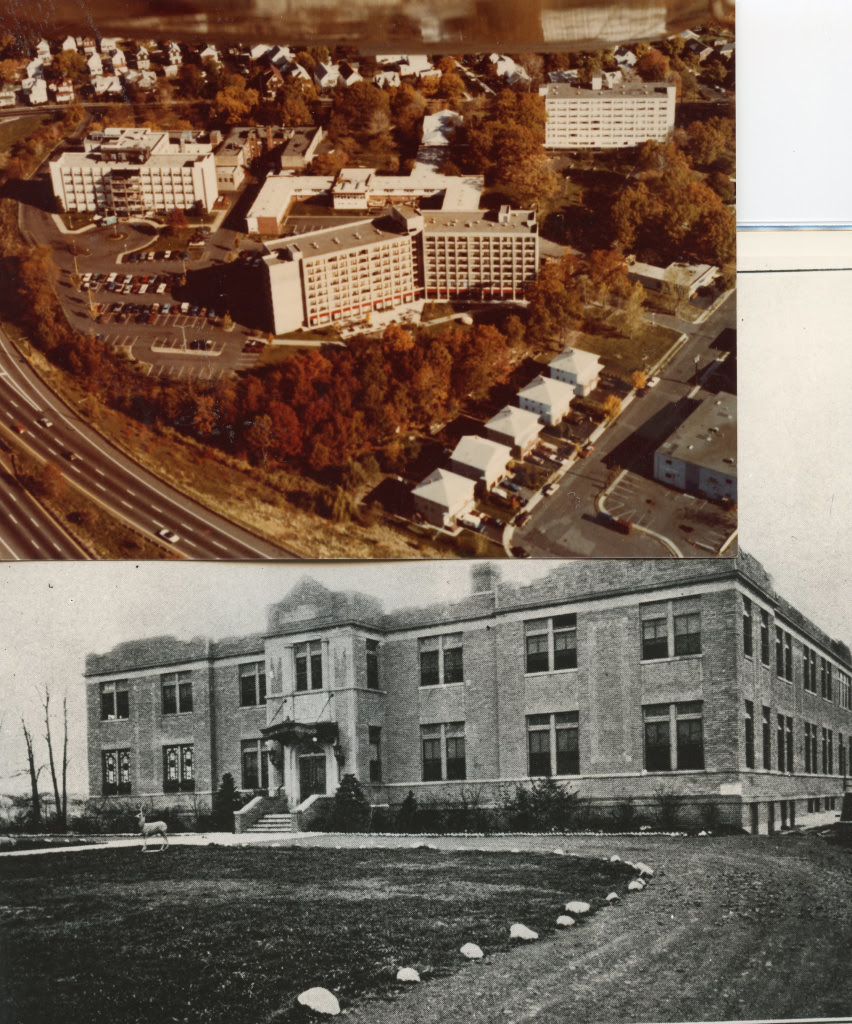Solomon Geld and the Daughters of Miriam
Our December 2020 Monthly Memoir is taken from a transcription of taped conversations made by Solomon Geld, who served as Executive Director and Executive Vice President of the Daughters of Miriam Center in Clifton. It is part of the oral history project of the JHSNJ.
I was invited by the Executive Vice President of the Daughters of Miriam, my good friend, Harvey Adelsberg, to attempt to give an oral history of the Daughters of Miriam from its inception.
How did I come to the Daughters of Miriam altogether? I was born and raised in Poland and studied in Germany. I was ordained [as a rabbi] in 1934 and received my PhD in 1937. I was arrested by the Gestapo in 1938 and was told that unless I left in two weeks I would go to a concentration camp. So, evidently, the Polish Consul was my personal friend who introduced me to an American Consul who gave me a visitor’s visa for America. That visitor’s visa was changed with the help of the Council of Jewish Women. I told them that I would accept any job, not to have to live on a stipend, because I had always supported myself. A gentleman named Mr. Cohen told me that there was a job available way below my training and background…with an orphanage in Clifton where they wanted someone to teach the children Hebrew and prepare them for Bar Mitzvah and also to be sort of (in high falutin’ language) a spiritual leader for the old folks. Without thinking, I did not ask what the remuneration would be but it turned out to be $15 a week, with room and board…
I was all of 27 when I came to the Daughters of Miriam and I conducted services, I read the Torah, I blew the shofar, and was really a friend [to the older people]. It was a bit different with the children because, needless to say, they spoke English much better than I did.
Nevertheless, I became their confidant and their big brother and I taught them Hebrew…and the Board of Trustees schepped nachas, both for my work with the aged and for my work with the
children.
I remember my first year with the institution. I distinctly remember that the budget was $13,000 a year. A great deal of work depended on volunteers and also the salaries were low…
The home depended, as far as food was concerned, on contributions of food in kind. Before the holidays, the Superintendent called a number of people to donate a chicken for the holidays. I used to go to the chicken man, Mr. Stein, I believe, on Washington Street, and select chickens…Also, after I learned to drive, I made the rounds to the stores on Friday mornings, to the meat store, the vegetable store, the bakery… There was an organization called the Purity Cooperative Bakery who supplied us daily with bread and rolls, free of charge, and the Eastside Bakery, Verp’s Bakery, the Water Street Bakery, and Newman’s Bakery contributed, too. Block’s Smoked Fish Company supplied white fish and carp and other things as donations for the aged and orphans of the Institution.
Every Saturday afternoon, I took the children for a walk through Hazel Street to Crooks Avenue to Main Street [to the Rialto movie theatre]. The owner of the theatre, who was Jewish, said, “Mr. Geld, any time you want the children to come to a movie, please feel free to bring them free of charge.”
When I got a little bolder, that young whippersnapper, that refugee, Sol Geld, I began to look around and found that orphanages were really a thing of the past. With the help of Judge Mendon Morrill and Joseph Shulman, I created, in the early forties, the first Jewish social service agency. We engaged Rose Batavia, a fine teacher and a first-class social worker, to survey the children to find them foster placement or to make them available for adoption. …by 1946 or 1947, I don’t remember the date exactly, the orphanage was dissolved and the children were either adopted or placed in foster homes. One of the adopted children was my son, Gary Geld.
In about 1944, a group [Joseph Shulman, Sam Schwartz, Ben Blazer, Milton Werksman, Charles Rosenstein, and Rose Shulman] felt that the Home was not taking care of those aged who needed our services most – namely the aged who were sick. That is when the idea was conceived to create what was originally called a “sick bay,” meaning that we …expected that it would be sort of a convalescent stay after coming from the hospital. We had 60 beds on the floor of the U-shaped building, which, incidentally, is used to this day. Mr. Raymond Kramer, of the Kramer Lumber Company, headed the building campaign. [We raised more money through the sale of some property]…We accumulated enough money to build the first infirmary for the aged and opened our doors to the first patients. We were only able to open one floor. In his fantastic foresight, Mr. Raymond Kramer suggested that we build a basement so that we would have a proper auditorium and some different rooms for therapy and a second floor as a shell. We engaged Weny Brothers & Storm with whom we had business dealings and they constructed the three first modern buildings, which served good purpose in its renovated form – even to this day – the first infirmary for the aged. Solomon Geld

Solomon Geld

Daughters of Miriam circa 1927 and also how it looks presently.

ad for the Rialto Theatre

Youngsters posing September 22,1940 on the front steps of the Daughters of Miriam.
